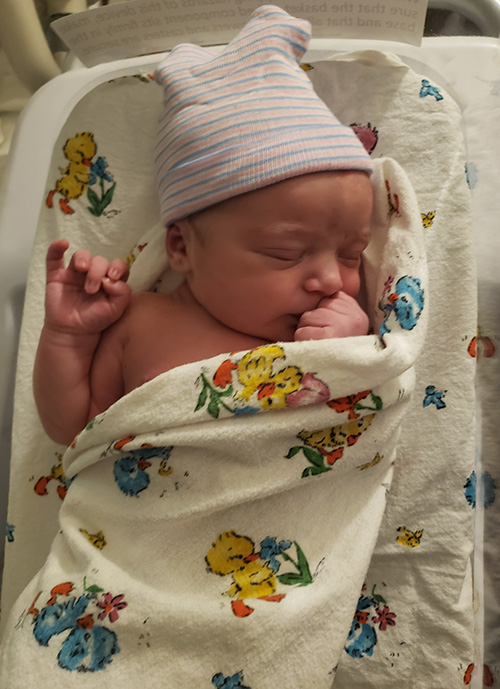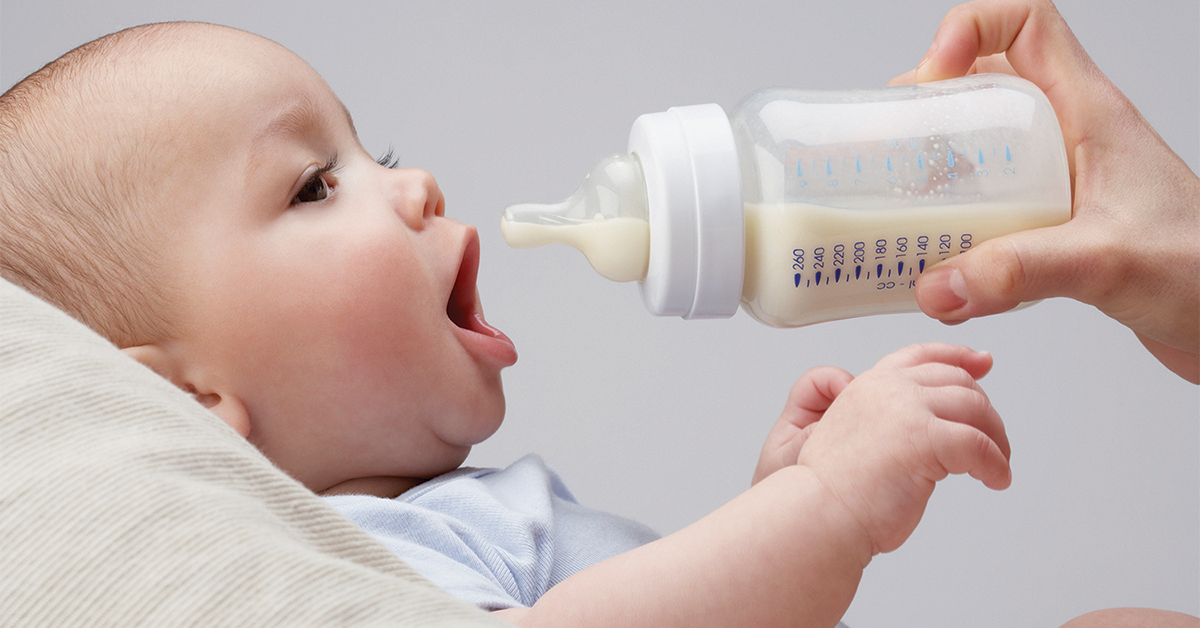The best-laid plans can go astray and still lead to an excellent birth experience
As an early childhood educator with the North Branch School district, Nicollete DeVall has extensive experience with infants and toddlers. With a dual license in early childhood education and parent education, the new mom felt well-prepared for the motherhood adventure. COVID-19, however, hampered typical preparation like hospital tours and in-person prenatal classes.
So when Nicollete and her husband Andrew arrived at Mora Hospital on Wednesday, March 17, the couple had never seen the Welia Health Birth Center except for in online pictures. They were impressed.
“The birthing unit was very nice,” said Nicollete. “The room was like a hotel room, and while we didn’t know it until after we delivered, it was actually a c-section recovery room equipped with a shower instead of a tub. I knew that after my daughter was born, I would want to take a bath. The nursing team was so gracious and supportive and just moved me next door.”
After 37 hours of labor, Nicollete more than deserved a relaxing soak in a tub!
The birth plan: avoid intervention

Lydia Eloise DeVall was born on March 19 at 8:57 am, weighing 7 lbs. 13 ounces. She was 20 inches long and 11 days overdue. The doctor recommended Nicollete not go beyond 42 weeks; she narrowly missed being induced. From the start of her pregnancy, which had gone extremely well, Nicollete hoped for a natural birthing experience with as little intervention as possible. She wanted labor to happen on its own, so sitting down to watch Wednesday night TV, she patted her belly and said, “Okay, baby, you have 24 hours to give me some indication that it’s time.”
Just a little while later, her water broke.
“The doctor told me that only 10 percent of expecting mothers have their water break, and it’s not like it is in the movies,” said Nicollete. “But I felt like I was in the movies; I even heard a little pop. I was extremely thankful I was able to get to the bathroom quickly, so it wasn’t a complete mess!”
As they arrived at the Birth Center and began to settle in, Nicollete commented that labor was progressing very well. The contractions were coming at a good pace from Wednesday night to mid-afternoon on Thursday. Nicollete was up and moving around with a portable monitor because she didn’t want to be stuck in a hospital bed, only lying down to secure the heartbeat monitor to the baby, who was wiggling around too much for the device to stay put.
“The contractions started to slow,” said Nicollete. “They went from being 5 minutes apart to 10 minutes apart. So, I paced back and forth in the little short hallway every chance I could just to keep moving.”
Her physician, Dr. Ryan Gaalswyk, checked in with her often. He told Nicollete and Andrew that the longer labor went on, the higher the risk of infection. If they were not on track at the 24-hour mark, Dr. Gaalswyk said they would need to administer potentially two doses of Pitocin, a natural hormone that causes the uterus to contract to induce labor or strengthen contractions during childbirth.
A change of plans
After 24 hours, Nicollete had only dilated to a 7 instead of 10, where she needed to be to start pushing, so the nursing staff connected an IV with Pitocin which kicked in right away. At first, her care team thought she’d be able to complete labor with a low dose of Pitocin. But when labor began to slow once again, they administered a higher dose.
Nearly 1 a.m.
Nicollete instinctively knew it would be a few more hours until she’d be able to push and wasn’t sure how much energy she’d have left for the final stage of labor. So, she discussed her epidural options with Dr. Gaalswyk. He explained that there were two types; the “regular” one and another that would only last about two hours. He recommended the former.
“I was impressed by how quickly the nurse anesthetist arrived. After all, it was the middle of the night,” said Nicollete. “He was very kind, and I had a really great experience with the epidural. I was even able to sleep, and when I woke up, they said I was finally fully dilated.”
She was pleased that even with the epidural, she could still feel dull contractions, and before she knew it, it was time to push. One of the reasons she hadn’t wanted any interventions was she wanted to experience the entire process naturally.
In the end, Nicollete pushed for four hours with Dr. Gaalswyk there for her the whole time. Nicollete knew from being a part of a friend’s birth it was rare to have a doctor in the room the entire time.
“Everyone raves about Dr. Gaalswyk,” said Nicollete. “The connections he makes with his patients and colleagues seem so special. I am so happy he’s a family medicine provider so he can continue to be mine and my daughter’s physician.”
After Lydia was born, Dr. Gaalswyk shared that usually, after three hours of pushing, the care team considers moving toward a c-section, but since her effort was progressing well, he decided to let it continue. Nicollete said she was glad she didn’t know that until it was all over.
“We had an excellent experience with every aspect of our care, both while we were there and afterward during our postpartum check-ups,” said Nicollete. “Every time a nurse would leave and change shifts, we were a little sad because we really loved that nurse. Then the next one would come on, and we found we loved that one as much as the one before! Every nurse we had had the right skills for the right time for where we were.”
Welcome to the world, Lydia. We are happy you are here! And thank you, DeVall family, for sharing your experience.
To learn more or to schedule a tour, call the Birth Center at 320.225.3525, or take a virtual tour any time.














